Russian lunar lander concept, LVPK (original) (raw)
Searching for details:
The author of this page will appreciate comments, corrections and imagery related to the subject. Please contact Anatoly Zak.
Related pages:
Russia mulls new-generation lunar lander
Around half a century after a first fruitless attempt to put a cosmonaut on the Moon, a new generation of Russian space engineers embarked on the development of a piloted lunar lander, in accordance with the nation's 10-year space plan starting in 2016. However, unlike the one-seat module of the first Moon Race, the future lander had to support long-term exploration of the Moon and deliver crew anywhere on the lunar surface.
Previous chapter: Lunar base
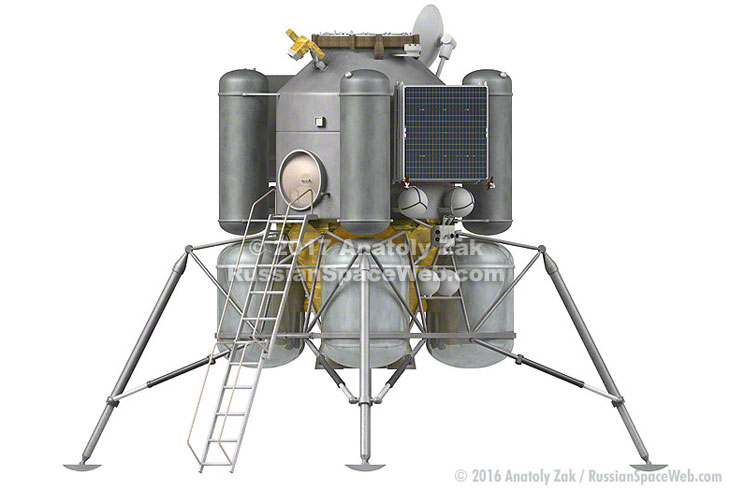
Russian lunar lander concept circa 2015.
Read our introductory article on the subject at:
Please help to keep this site open and current! The pace of our development depends primarily on the level of support from our readers.
In 2015, after several years of preliminary studies, the Russian space agency, Roskosmos, made plans to begin funding the development of a lunar lander and associated systems which would be necessary to deliver crews from lunar orbit to the surface of the Moon.
In the official documentation, the project was officially identified as Lunar Ascent and Descent Complex, LVPK.
According to the Russian lunar exploration plans circa 2015, the lander would be delivered to the lunar orbit by a dedicated rocket without a crew. It would then rendezvous and dock with a piloted transport vehicle in the lunar orbit. The lander would then deliver the crew to the surface and its ascent stage would carry cosmonauts back to the lunar orbit for a rendezvous with a transport vehicle for trip back to Earth.
Several concepts of the lunar lander were formulated in 2016. At the time, the spacecraft had the following specifications:
| Specification | Initial version | Heavy version |
|---|---|---|
| Spacecraft mass in lunar orbit | 20 tons | 27 tons |
| Crew size | 2 people | 4 people |
| Cargo delivered to the lunar surface | 100 kilograms | up to 625 kilograms |
| Flight duration in unmanned mode in lunar orbit | 190 days | 190 days |
| Duration on the surface of the Moon with crew | 3 days | 14 days |
| Number of supported person/EVAs | 4 | 21 |
| Diameter | 5.5 meters | 5.5 meters |
| Length | 11 meters | 11 meters |
Comparison of lunar landers systems:
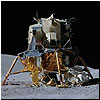 |
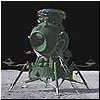 |
 |
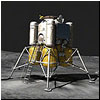 |
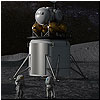 |
|
|---|---|---|---|---|---|
| - | LM (Saturn-Apollo) | LK lander (N1-L3) | Altair (Constellation) | Roskosmos (2015) (IC) | NASA (2019) (IC) |
| Liftoff mass | 14.67 - 16.37 tons | 5.56 tons* | 45 tons | 20 tons | 45 tons**** |
| Crew | 2 | 1 | 4 | 3 | 3 |
| Habitable volume | 6.65 cubic meters | 5 cubic meters | 17.5 cubic meters** | 16-25 cubic meters | ? |
| Lunar surface access | Equatorial regions, Near side | Equatorial regions, Near side | Global | Global, including polar regions | Global, including polar regions |
| Surface duration with crew | 3 days | 1 day | 4-7 days | up to 3 | ? |
| Maximum surface duration without crew | Up to 1 | A few hours | Up to 210 days | Up to 14 days*** | ? |
| Payload to the lunar surface | Up to 300 kilograms | Less than 50 kilograms | No less than 500 kilograms | No less than 125 kilograms | ? |
| Lunar samples delivered to lunar orbit | Approximately 120 kilograms | Less than 50 kilograms | No less than 100 kilograms | No less than 25 kilograms | ? |
| Extra habitable volume | No | No | Airlock | No | ? |
*Not including Block D braking stage; **including airlock; ***Can be extended within lunar base operation; ****includes transfer stage, but does not include refueling tanker.
Lunar lander studies for the Gateway station (2016-2018) (INSIDER CONTENT)
Between 2016 and 2018, Russian industry conducted a new phase of the lunar lander design asociated with the planning for the International Cis-Lunar Platform, a.k.a. the Lunar Gateway. Not coincidently, Korolev-based RKK Energia did its research into the LVPK lander system in parallel with the work of NASA's Lander Study Group then recently formed for looking into lunar expeditions to be staged from the Gateway. (INSIDER CONTENT)
Next chapter: The LVPK program in mid-2010s (INSIDER CONTENT)
Page author: Anatoly Zak; Last update:May 29, 2025
Page editor: Alain Chabot; Last edit: Sept. 25, 2017
All rights reserved

A notional concept of a lunar lander circa 2010.
This artist rendering depicts a concept of a lander used in the early planning of Russian lunar expeditions. The spacecraft is shown in the lunar orbit, preparing for descent on the surface. Click to enlarge. Copyright © 2008 Anatoly Zak
This artist rendering depicts a concept of a lander on the surface of the Moon. Click to enlarge. Copyright © 2007 Anatoly Zak
conceptualized during 2015 to be compatible with
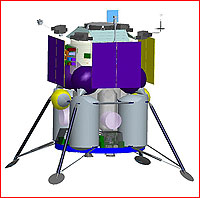




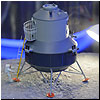



)
)
)
)